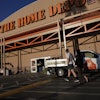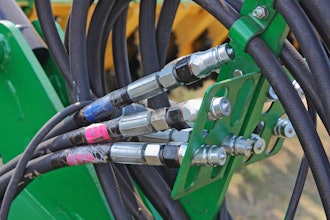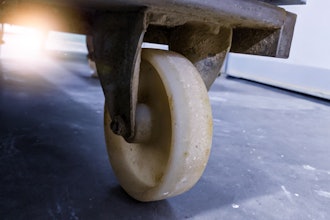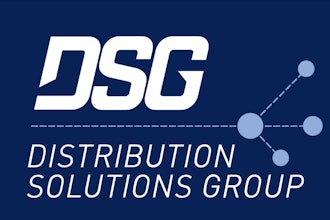Bolstered by demand growth from the recovering construction and industrial sectors, the rising price of steel is weighing on product prices.
As a primary input for many construction and industrial equipment products, steel exhibited a significant degree of price volatility in the midst of the Great Recession. As the construction and industrial industries tanked, demand for steel followed suit, with prices plunging 25.1% in 2009. Steel prices bounced back strongly the following two years; however, the recovery was short lived. As a result, IBISWorld expects steel prices to decline overall at an annualized rate of 3.8% from 2011 to 2014.
Lower steel prices have helped curb price growth for products used in building and industrial applications. However, with steel prices forecast to increase at an annualized rate of 2.2% over the next three years and construction and industrial activity projected to remain strong, buyers will encounter higher prices for steel-based products heading into 2017. IBISWorld has identified five key products that will likely undergo accelerated price growth over the next three years due to rising steel prices: security wire fencing, nails, elevators, building demolition machinery and equipment and forklifts. Understanding the impact rising steel prices have on these products can help buyers make more informed decisions about supply agreements.
Security wire fencing
Steel is a primary input in the manufacture of security wire fencing, accounting for an estimated 25.0% of the average supplier’s total purchasing costs in 2014. Steel wire is used to make barbed wire, razor wire and other wire fencing for nonresidential and residential building applications. In the three years to 2017, the value of construction is projected to increase at an annualized rate of 8.2%, fueling higher demand for security wire fencing. The one-two punch of higher demand and rising steel prices will push security wire fencing prices upward. IBISWorld forecasts that the average price for security wire fencing will increase at an annualized rate of 4.5% over the next three years, compared with 3.3% annualized growth from 2011 to 2014.
Although buyers will pay higher prices for security wire fencing going forward, they can take steps to minimize the impact of these costs. For example, bulk purchases (typically 10,000 feet of wire or more) reduce per-unit costs and may incentivize suppliers to offer lower prices or more value-added services. Long-term contracts can also shield buyers from supply interruptions and price hikes during periods of strong demand. Additionally, buyers have a myriad of low-cost overseas suppliers from which to choose, which can typically offer lower prices than their US counterparts.
Nails
Nails are one of the most ubiquitous construction and manufacturing tools. Nails can be made of aluminum and brass; however, steel is the metal of choice for most nails due to its strength. In fact, IBISWorld estimates that steel accounts for about 86.0% of total purchasing costs for the average nail manufacturer. Accelerated growth in construction and manufacturing activity is projected to bolster nail price growth over the next three years. For example, the number of housing starts (a key indicator of residential building activity) is forecast to increase at an annualized rate of 9.5% in the three years to 2017. With the average wood frame home using between 20,000 and 30,000 nails, and steel prices expected to climb, buyers will encounter higher demand and prices for nails in the coming years. IBISWorld forecasts that nail prices will increase at an annualized rate of 3.8% over the next three years, compared with 2.6% annualized growth from 2011 to 2014.
Fortunately for buyers, nails are low-weight, commoditized goods that can easily be purchased in bulk to minimize higher costs. High-volume purchases save buyers money by lowering per-unit costs. In addition, a number of low-cost manufacturers exist overseas that can offer lower prices than US producers. Furthermore, thanks to their small size and weight, buyers can easily and affordably pack and ship nails long distances.
Elevators
Elevator demand is heavily dependent on building activity. Over the next three years, the construction sector’s postrecession recovery is forecast to strengthen, especially nonresidential construction. In the three years to 2017, the value of private nonresidential construction is forecast to increase at an annualized rate of 7.6%, fueling higher demand for elevator systems in office towers, hospitals, manufacturing facilities and other nonresidential and industrial buildings. Higher demand from key building markets will spur higher elevator prices.
Increasing steel prices will also push elevator prices higher over the next three years. While a host of other materials (e.g. plastic, rubber, wood, marble) are used to produce elevators, steel is the primary input, accounting for about 35.0% of the average elevator manufacturer’s total purchase costs. Higher demand and higher input costs are projected to accelerate elevator price growth to an annualized rate of 4.2% from 2014 to 2017, compared with 3.4% annualized growth over the past three years.
In light of these price gains, buyers are encouraged to purchase elevators now, before price growth strengthens. Buyers can also source elevators from overseas suppliers in Mexico and China, two of the top importers of elevators into the United States. Producers in these countries can manufacturer elevators at a lower cost than US manufacturers and pass the cost savings down to buyers in the form of lower prices.
Building demolition machinery and equipment
Demand for building demolition machinery and equipment is heavily dependent on the level of overall construction activity. Due to the heavy-duty nature of the work performed by these products, steel is the metal of choice for their production. As such, steel and other metals account for an estimated 80.0% of the average supplier’s total revenue. Increased building activity and higher steel prices will accelerate price growth for building demolition machinery and equipment, which is forecast to increase at an annualized rate of 3.6% through 2017, compared with 3.0% annualized growth from 2011 to 2014.
Buyers looking to skirt some of the impact of these higher prices should make purchases now. Buyers should also consider imports, particularly from Mexico, to take advantage of the country’s lower production costs and product prices. Alternatively, buyers can consider renting an excavator or other type of demolition unit, which is significantly cheaper than buying one.
Forklifts
Forklifts are an integral tool in many manufacturing, warehousing and other industrial applications. Over the next three years, industrial production is expected to pick up, with the industrial production index forecast to increase at an annualized rate of 3.0% from 2014 to 2017. Stronger demand from industrial markets will increase demand for forklifts, resulting in higher prices.
Steel prices will also play a role in higher forklift prices in the coming years. Steel is the primary input used in forklift manufacturing, accounting for an estimated 63.0% of the average forklift manufacturer’s total purchase costs. As such, higher demand and higher production costs will accelerate growth in forklift prices at an annualized rate of 3.2% in the three years to 2017, compared with 2.9% annualized growth over the past three years.
Buyers can avoid paying higher prices down the road by making their forklift purchases now; however, if that is not possible, there are other ways to mitigate the effect of higher prices. For example, buyers can purchase items in bulk to score a lower cost per unit. Buyers might also consider buying a used forklift, which runs about half the cost of a new unit.
Declining steel prices helped shield buyers from the full brunt of the postrecession boom in construction and industrial activity the past three years, but that will not be the case heading into 2017. With steel prices forecast to return to growth and construction and industrial activity poised to accelerate, price growth for steel-based products will rise further. The five products highlighted above represent only a fraction of the many products and services that will be impacted by rising steel prices over the next three years. Buyers with an understanding of how steel and other price and demand drivers affect these products will be better equipped to negotiate more favorable supply agreements.
For a printable PDF of this report, please click here.






















